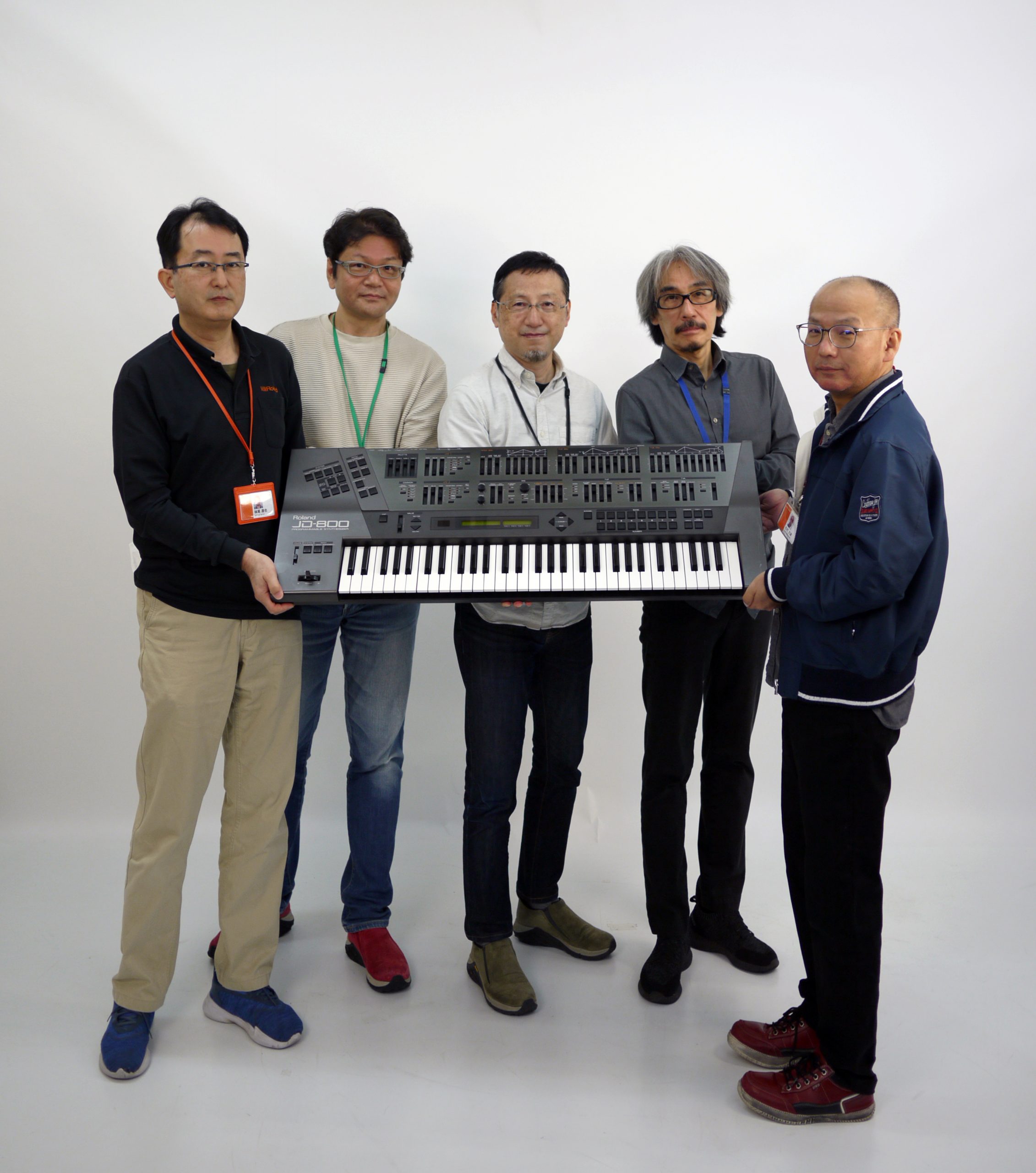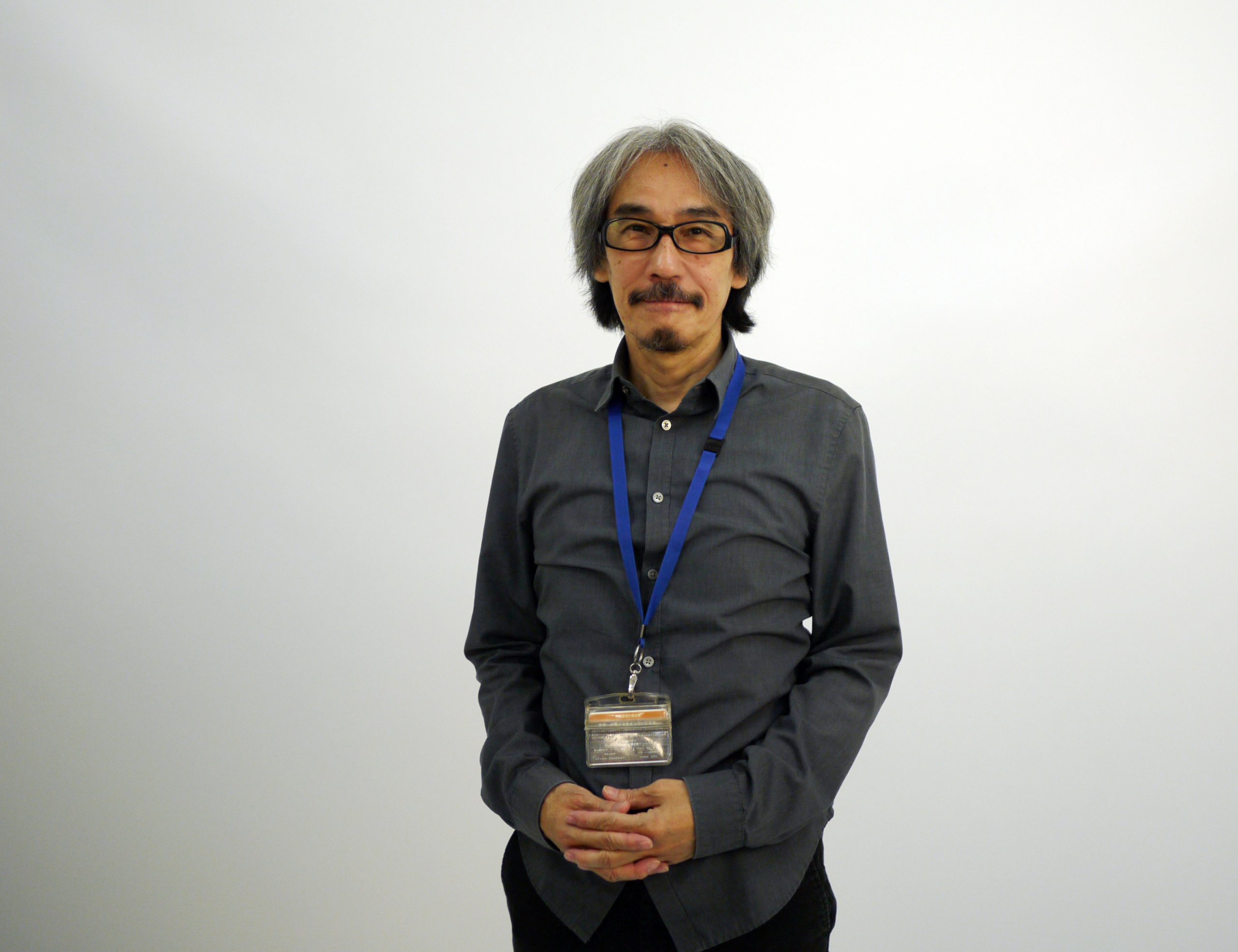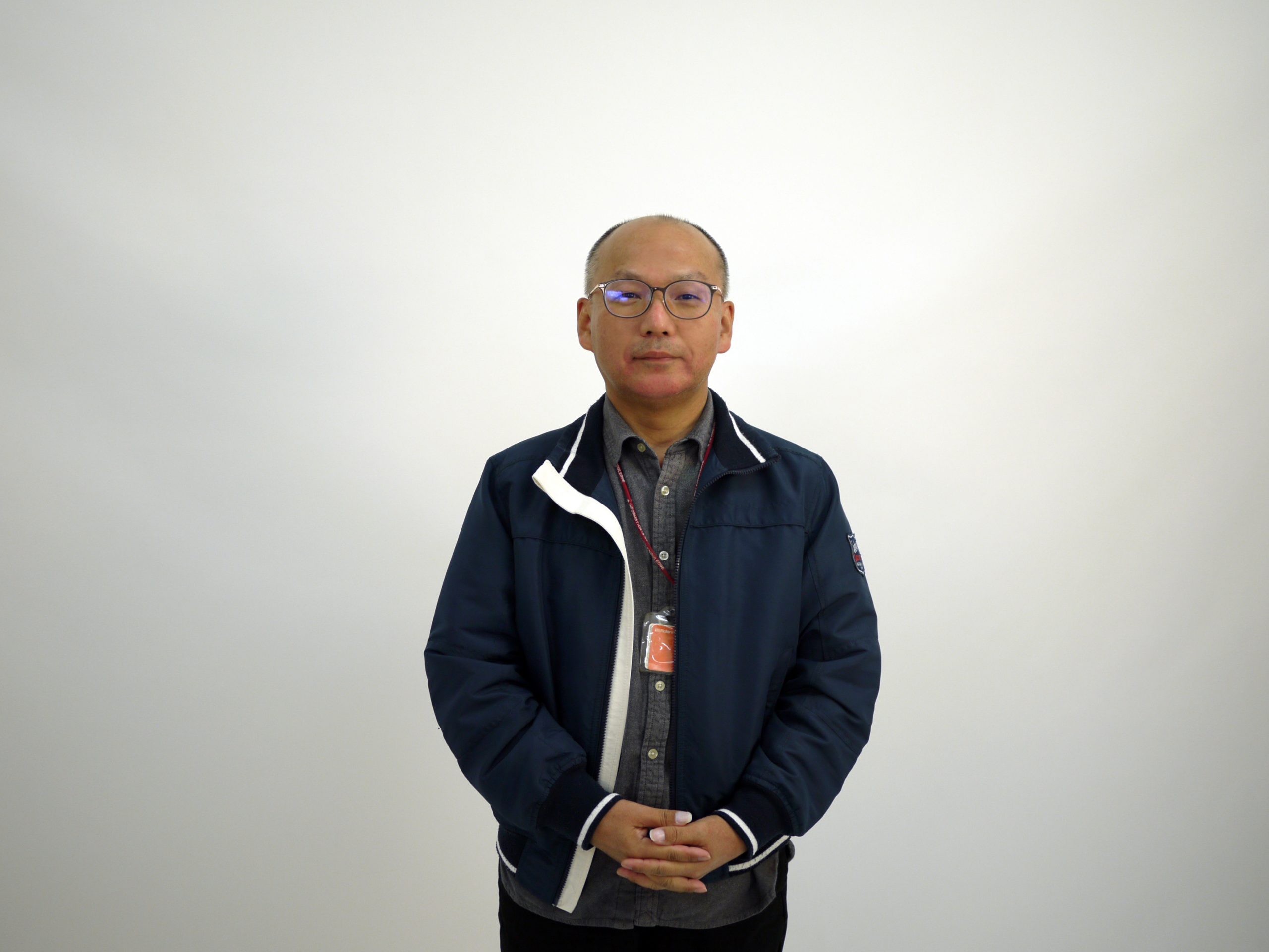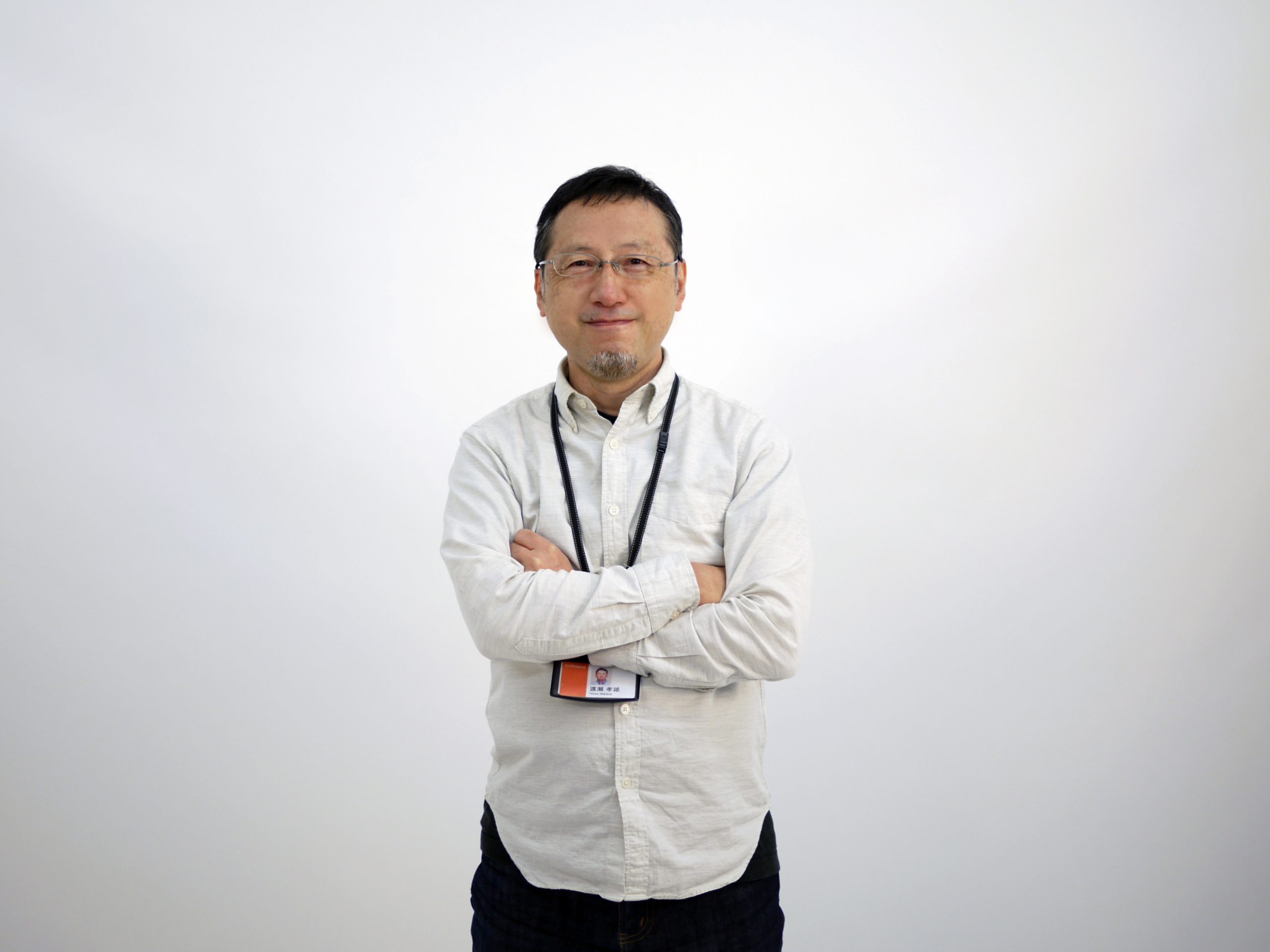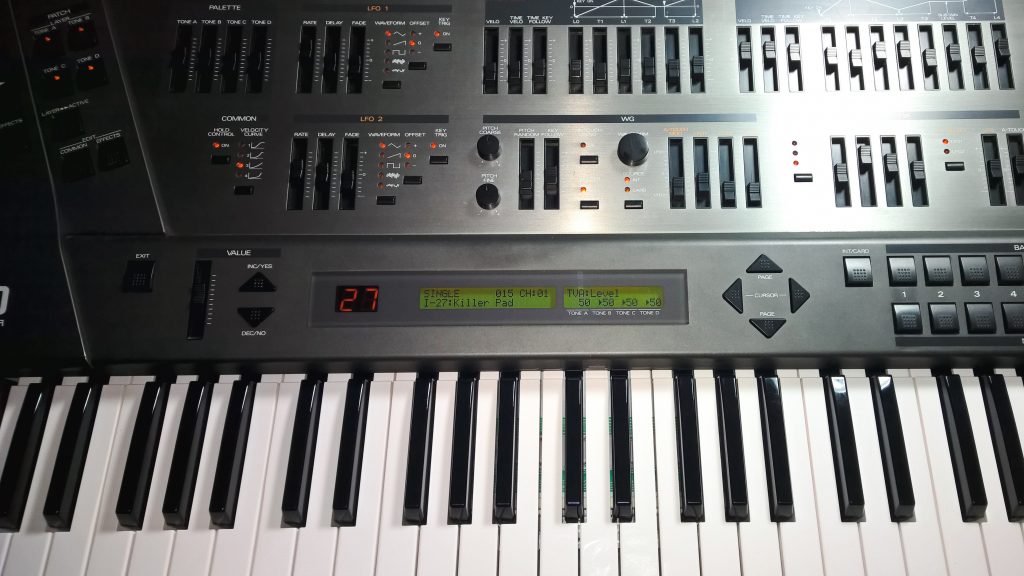In 1991, Roland bucked the trend of buttonless interfaces and acoustic-sample workstations. The JD-800 was a slider-packed synthesizer designed to bring sound creation back to music-making. With the legendary instrument now in Roland Cloud and hardware form as the JD-08 Boutique, it’s time to reveal the whole story of the JD-800.

Birth of a New Legend
At the dawn of the ’90s, the world of music creation became fixated on digital synthesis. Sampled-based synthesis—made viable by the D-50 and later instruments—ushered music into a post-analog state. These tools could recreate acoustic instruments in ways never before possible. Still, the loss of hands-on control, as well as the relative paucity of parameters, meant sound design was taking a back seat to preset selection.
“Around 1990, digital workstation synths and multitimbral sound sources were at their peak,” recalls JD-800 lead designer Kazuhisa Takahashi. He’d previously worked on the JUNO-106, among other classic Roland instruments. “Analog knobs and synths were old-fashioned,” he recalls. “However, I’ve loved synths since I was a student. I feel the fun of making sounds from sine and square waves is the root of synths.”
Like many engineers before him, the limitations of the previous generation of equipment inspired Takahashi. “I became frustrated by the technique of creating sounds numerically on small LCD screens on digital synths,” he says.
"I've loved synths since I was a student. I feel the fun of making sounds from sine and square waves is the root of synths."
-Kazuhisa Takahashi
With support from Roland’s Ikutaro Kakehashi, and bolstered by a booming Japanese economy, Takahashi and his team went to work. In the fall of 1989, they set out to make a no-compromise instrument. They hoped it would appeal to enthusiasts who wanted hands-on control. This ideal user base would include musicians and composers.
Under The Hood: Going Beyond The D-50
The JD-800, a 24-voice polyphonic instrument, used an updated take on Roland’s proprietary LA Synthesis, first developed for the D-50. That 1987 synth used a combination of short PCM samples to form a sound’s attack portion. Digital subtractive synthesis provided the sustained section. The JD-800 took this and evolved it. It added loopable samples for additional sustain options plus multi-samples for better tracking. The instrument also upped the sample rate on all waveforms to 44.1kHz.
Users could transform waveforms with traditional subtractive synthesis parameters. These included a digital filter (TVF), three envelopes (filter, amplitude, and oscillator pitch), and two LFOs. High-quality effects came in at the end. There were two groups: one with distortion, phasing, and more. The other contained chorus, delay, and reverb. Altogether, this constituted a Tone. The synth could layer up to four Tones into a single Patch, allowing for unique, deep sounds. Picture percussive sounds layered with evolving pads, or single sounds with complex overtones. The JD-800 could do all this.
"The sound source chip, TVF chip, and DSP chip for effects were all new. Looking back, it was a huge system."
-Fumio Matsumura

Catching the Waves
The CD-quality sample rate of the waveforms, coupled with the high-end D/A converters, resulted in a rich sound for a digital instrument. “There was something magical about the D/A converter circuit we used,” says Eric Persing, who worked on the synth as part of Roland R&D Los Angeles. Between 1984 and 2004, he was Chief Sound Designer, creating sounds for instruments like the D-50 and JV-1080.
Another key to the magic of the JD-800 was its array of processor chips. Most synths use single processor chips. The JD-800 was unique in that it had separate ones for the filters and effects, with discrete processors for the keyboard and sound engine. “Pretty much every synth after the JD-800 went to more of a single chip design, but there’s something about that kind of separation,” Persing explains. “It made it a professional instrument. When you play it, there’s almost no delay at all between the keyboard and the sound engine. It feels more like playing an analog synth where you don’t have that microprocessor scanning thing.”
The chips were brand new and predated the instrument itself. “Certainly, the JD-800 hardware was gorgeous,” says Matsumura says. “The sound source chip, TVF chip, and DSP chip for effects were all new. Looking back, it was a huge system.”
Hardware and Design: The Synth Stealth Bomber
The look of the JD-800 was as striking as its sound. Created in-house, the 69 sliders and buttons were an integral part of the design. Roland wanted users to rediscover the value of digital. The layout “allowed users to freely program tones, even though it was fully digital.” He lauds this as unique in an era when synths became instruments that used preset tones.
Although intended to be black like the D-50 and other Roland contemporaries, the JD-800 eventually shipped in its iconic gray. The overall look took inspiration from military hardware. “The idea was always that it would have a stealth bomber kind of look,” Persing said. The angled panel was unique as well. “You could see everything at a glance and program quickly.”
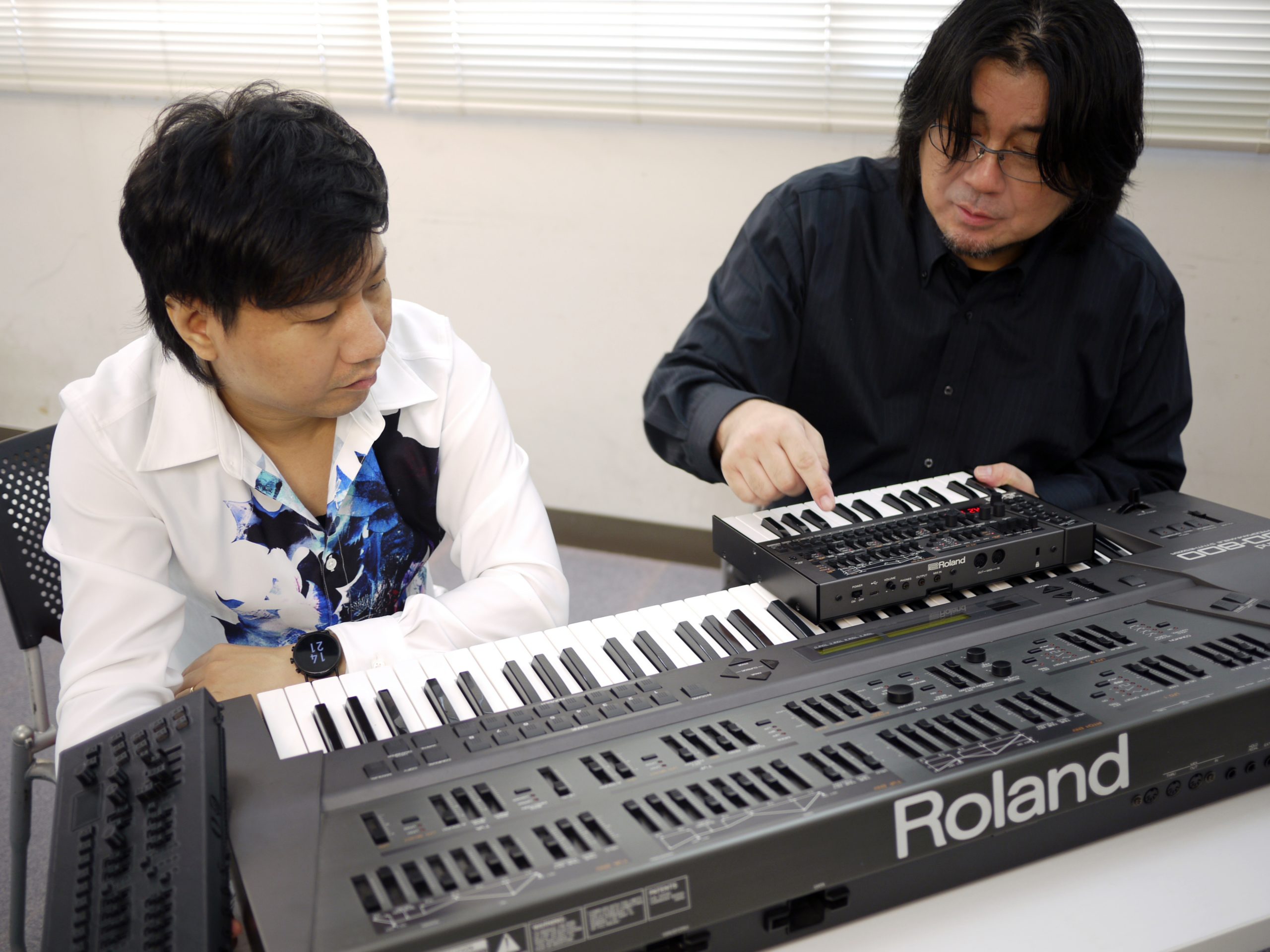
“I designed those parts from the user's point of view, based on the idea that I want the user to play comfortably.”
-Kazuhisa Takahashi


The attention to design detail extended to the feel of the sliders and buttons. Certain buttons had a heavier feel, while others were lighter. “I designed those parts from the user’s point of view, based on the idea that I want them to play comfortably,” Takahashi reveals.
More Sliders the Merrier
The JD-800 is also known for its idiosyncratic slider parameter behavior and change curves. These were somewhat unintentional. “To reflect changes in real-time, we had to think up new ways to calculate to reflect the throw of the sliders,” Watase says. “Plus, the JD-800 slider had a resolution of only 128. We examined how to allocate changes in numerical values. That involved modulation, so the movement of the parameters was unique.”
The synth was so fresh the design team was free to try new things. “It was a completely new concept that had nothing to do with past models,” Senoo shares. “We could be open when thinking about the design of the user interface. It was fun.” Senoo explains how he got the idea to split the LCD window. “Instead of using two LCDs, I put a partition on the panel surface to divide the one 40-digit x 2-line LCD screen into right and left windows.” A traditional numerical LED screen for patch number complements the dual LCD screens.
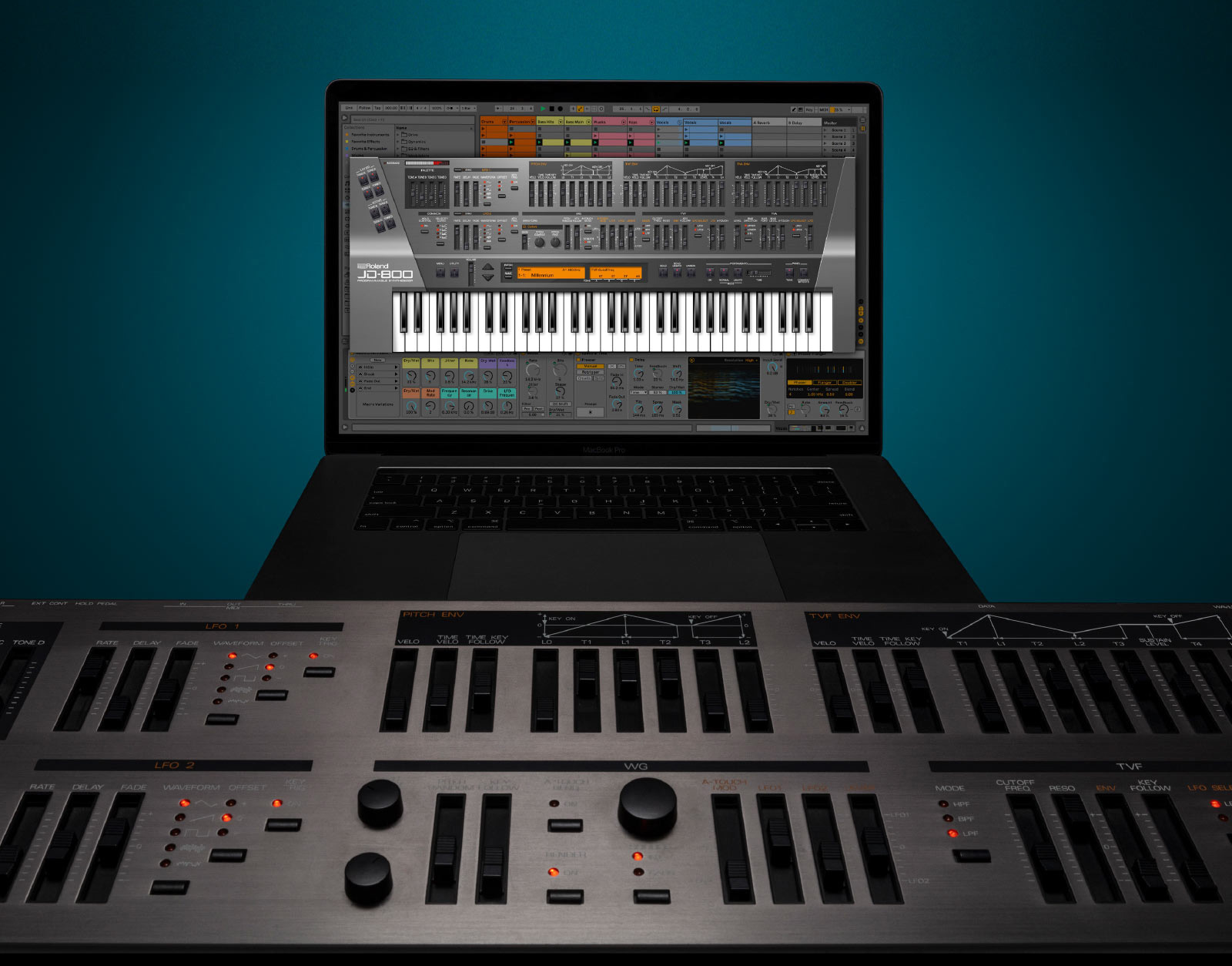
The Japan-California Connection
The JD-800 was unique in that its development was a collaboration between two teams: one in Japan and one at Roland R&D Los Angeles. The project got underway in Japan. However, soon the designers were traveling back and forth, fine-tuning the design based on the input of both groups. Sound design and presets happened entirely in Los Angeles, helmed by Persing.
There were no acoustic PCM samples—no saxophones or orchestral strings. This was to be a very synthetic synthesizer. However, there was one exception: preset 53, also known as “Ac. Piano 1.” This waveform came at the insistence of the Roland sales department. Takahashi and his design team were initially reluctant. They felt that they were designing a synthesizer, not a ROMpler.
Sales insisted, however. “I was greatly opposed,” remembers Watase. “Still, I added a piano in a hurry. However, at that point, there was almost no room left on the wave ROM.” Necessity was the mother of invention that led to the JD-800’s iconic piano patch. “I made the size of the wave as small as possible to create a piano sound that seemed to work.”
"The JD-800 found its audience and has endured beyond a lot of its contemporaries." -Brandon Ryan
Release and Reception: Ahead of Its Time
The lack of acoustic instruments may have turned some musicians off, but the esoteric sounds attracted a different user base. These were electronic musicians comfortable working with vintage Roland analog gear. House and techno artists gravitated to the JD-800, enticed by its hands-on control and unique sound possibilities.
Despite solid response at NAMM in 1991, the JD-800 wasn’t a major hit like the D-50. “The market drive to samplers and ROMplers was still strong. Also, the price was relatively high compared to some other offerings,” Roland’s Brandon Ryan explains. “However, the JD-800 found its audience and has endured beyond a lot of its contemporaries.”
Along with techno and house producers, the JD-800 was a hit with Prince, who used it all over Rave Un2 The Joy Fantastic. Keyboard wizard Rick Wakeman appreciated the instrument for its analog-style sound design. Over in Japan, J-pop and city pop producers made use of its unique sound palette.
Thirty Years of History: A Lasting Legacy
As with Roland instruments like the TR-808, TB-303, and SP-404, the JD-800 was ahead of the curve. Its technology got repurposed into the more popular rackmount JD-990 in 1993. That, in turn, led to the runaway success of the JV-1080. Hands-on control would finally make a comeback in 1996 with the analog-modeling JP-8000.
Nowadays, Roland views the JD-800 as part of its vintage digital lineup, one that also includes the D-50. “The JD-800 is one of the icons of this period, and we make room for it alongside the D-50, JUNO-106, and others,” Ryan says. “I think there is a certain pride in that Roland saw the future—and bucked trends to embrace that future—even if the market as a whole wasn’t ready for it yet.”
The JD-800 was about pleasing themselves and pushing limits. “I couldn’t afford to think about what it would be like in the future,” explains Takahashi. “What was important was to make things that satisfied us.” Still, its resilience thrills him. “Even if you don’t know the sound of the JD-800, being enriched by the music produced with it is the greatest joy an instrument maker could have.”
